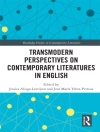This is the first book to view Shakespeare’s plays from the prospect of the premodern death arts, not only the ars moriendi tradition but also the plurality of cultural expressions of memento mori, funeral rituals, commemorative activities, and rhetorical techniques and strategies fundamental to the performance of the work of dying, death, and the dead. The volume is divided into two sections: first, critically nuanced examinations of Shakespeare’s corpus and then, second, of Hamlet exclusively as the ultimate proving ground of the death arts in practice. This book revitalizes discussion around key and enduring themes of mortality by reframing Shakespeare’s plays within a newly conceptualized historical category that posits a cultural divide—at once epistemological and phenomenological—between premodernity and the Enlightenment.
विषयसूची
Section I: Staging the Death Arts .- Chapter One: Shakespeare’s Ars Moriendi, Andrew D. Mc Carthy.- Chapter Two: Deciphering the Dead: Speaking for Corpses in Early Modern Drama, Brian Harries.- Chapter Three: ‘As thou art, I once was’—Death’s Unstable Binary, Eileen Sperry.- Chapter Four: Antony and Cleopatra and the Vicissitudes of Monumentalization, Grant Williams.- Chapter Five: Tombs, Ooze, and Ashes in Pericles, Dorothy Todd.- Chapter Six: Empathetic Reflections on Love, Life, and Death in Othello, Jessica Tooker.- Chapter Seven: Othello’s Speaking Corpses and the Performance of Memento Mori, Maggie Vinter:- Section II: Hamlet and the Death Arts.- Chapter Eight: Turnings in the Grave: Riddles, Death, and Burial in Hamlet, Jonathan Baldo.- Chapter Nine: The Theatre of Hamlet’s Judgements, Zackariah Long.- Chapter Ten: The Art of Losing: Descriptionin Early Modern Rhetoric, Amanda K. Ruud.- Chapter Eleven: ‘Native and indued / Unto that element’: Dissolution, Permeability, and the Death of Ophelia, Pamela Royston Macfie.- Chapter Twelve: Artful Death and Women’s Suicide: Gertrude and Ophelia, Lina Perkins Wilder.- Chapter Thirteen: Artless Deaths in Hamlet, Isabel Karremann.- Chapter Fourteen: ‘He made a good end’: Middleness, Ending, and Annihilation in Hamlet, Michael Neill.
लेखक के बारे में
William E. Engel is the Nick B. Williams Professor of Literature at The University of the South, in Sewanee, Tennessee, USA. He has published eight books on literary history and applied emblematics, including two critical anthologies coauthored with Rory Loughnane and Grant Williams, The Death Arts in Renaissance England (2022) and The Memory Arts in Renaissance England (2016); and has coedited several collections of essays including Memory and Mortality in Renaissance England (2022) and Memory and Forgetting in the Early Modern Era (2018).
Grant Williams is an Associate Professor of English Literature at Carleton University, in Ottawa, Canada. With William E. Engel and Rory Loughnane, he has co-authored The Death Arts in Renaissance England (2022) and, with Donald Beecher, edited Henry Chettle’s Kind-Heart’s Dream and Piers Plainness: Two Pamphlets from the Elizabethan Book Trade (2021). He has also co-authored The Memory Arts in Renaissance England (2016) with Engel and Loughnane and co-edited three collections: Taking Exception to the Law (2015), Ars reminiscendi (2009), and Lethe’s Legacies (2004)












